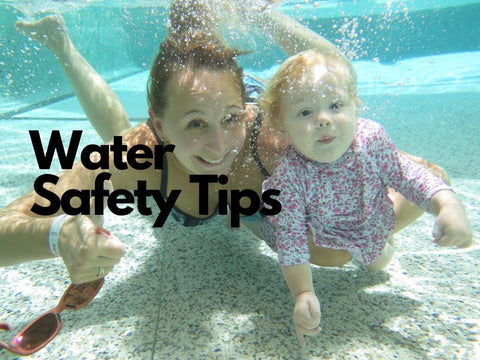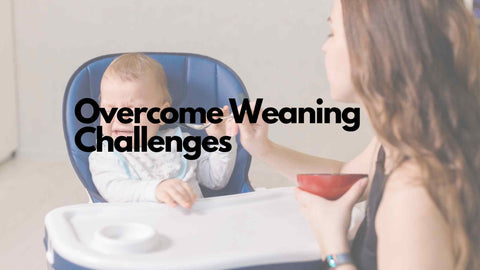Drowning Prevention Week - Raising Awareness about Water Safety
As we embrace the summer season with warmer weather, sunny days, and holidays to locations with pools and beaches, it's vital for us as parents and caregivers to remain vigilant and prioritise water safety.
Drowning is the leading cause of accidental death for children under the age of 4. Drowning Prevention Week, June 17-24th, aims to raise awareness about water safety and educate parents and caregivers on how to safeguard their children. This annual event, organised by various water safety organisations, provides a platform to promote essential guidelines and strategies that can help prevent accidents in and around water.

Supervision and Vigilance:
Active supervision is the most critical aspect of water safety. Never leave children unattended near water, whether it's a pool, a beach, or even a bathtub. Be your child's lifeguard and ensure constant vigilance. Avoid distractions such as smartphones or reading materials and ensure you have eyes on your children at all times.
What if your child is a confident and competent swimmer?
While confident swimmers may possess the necessary skills to navigate the water, it's essential to remember that accidents can happen to anyone, regardless of their proficiency. Children, in particular, may overestimate their abilities or become fatigued after prolonged swimming sessions. By remaining watchful and proactive, we can mitigate risks and ensure the safety of our little ones during their water adventures.
Talk about Water Safety at Home
Water Safety Education: Teaching children about water safety is essential and equips them with life-saving knowledge. Educate children about the dangers of water, the importance of swimming with adult supervision, and the significance of following safety rules. Remind children calmly before each swimming session about key safety rules such as checking with you before they enter the water, which is the shallow and deep end of the pool, where to safely exit the pool, and your expectation of their behaviour close to the water's edge.
When to Use Water Aids
Life Jackets and Personal Flotation Devices: Depending on your child's level of swimming and chosen water activity, ensure that children wear appropriately fitted life jackets or personal flotation devices (PFDs). Insist on their consistent usage, as these devices provide buoyancy and increase the chances of survival in case of an accidental fall into the water. Lead by example and wear adult lifejackets when you are in deep water to encourage children to do the same.

Lifesaving knowledge
First Aid and CPR Training: Every parent or caregiver should try to have basic first aid and CPR training. For those unable to attend classes or pay for courses, there are many resources available online that will give you the basics. Knowing how to respond swiftly and appropriately in the event of an emergency can make a significant difference in saving a life. Consider taking a certified first aid and CPR course to gain the skills needed to handle water-related emergencies confidently.
Swimming Lessons
Learning to swim is an essential life skill and where possible we believe every child should have swimming lessons.
What to Expect when Teaching Babies and Toddlers to Swim:
At this age, you are trying to build water confidence and water safety knowledge in a fun and engaging way.
Water Safety
Ensure your child is aware of the importance to wait for an adult before entering the water and if they require swimming aids, about waiting for these to be put on. Talk them through the dangers of the water your are visiting; for swimming pools, this could be the deep end and the shallow end. For the sea, this can be about waves and currents.
Underwater Confidence

Teaching a baby to go underwater can be a gradual process that requires patience, trust, and a calm approach. Pictured here is co-founder Celeidh with her 10 month old underwater.
-
Start with Gentle Water Introduction: Begin by pouring water gently over your baby's head and face while maintaining eye contact and speaking in a soothing tone. This helps your baby become familiar with the sensation of water on their face and builds trust.
-
Blowing Bubbles: Encourage your baby to blow bubbles in the water by demonstrating it yourself. Model the behaviour by blowing bubbles with your mouth just above the water's surface. This helps your baby become comfortable with the idea of submerging their face in water.
-
Gradual Submersion: Slowly progress to brief submersions. Hold your baby securely under their armpits while maintaining eye contact and gently lower them into the water, counting to three. Lift them out of the water immediately and shower them with praise and encouragement and a big smile.
-
Repeat and Increase Submersion Duration: Repeat the process of gentle submersion, gradually increasing the duration each time. Keep the sessions short and positive to maintain your baby's trust and comfort level. Aim for progress rather than rushing the process.
-
Use Toys and Games: Incorporate water toys or games to make the experience enjoyable. Floating toys or colorful objects can help distract your baby and make going underwater a fun activity.
Self-Rescue
A certified swim instructor is the best person to teach your child self-rescue techniques in the water when they are learning to swim. These include learning how to roll over and shout out, finding and holding onto an edge, and learning to float. Repetition is key here.
Most baby and toddler swim classes teach self-rescue techniques to children as part of their swimming agenda but there are also some course specifically designed for this - you can research what's available in your area.
Kicking
Teaching a child to kick in the water is an essential skill. Kicking lays the foundation for more advanced swimming strokes in the future but it is also great for developing gross motor skills by engaging the large muscles in the legs and hips. Kicking can also aid balance and control in the water.
Children can learn to kick by sitting on the edge of a pool and making a splash, or by putting their arms around your neck whilst you hold their calves and support them in the kicking motion.

In conclusion, Drowning Prevention Week serves as a poignant reminder to prioritise water safety and take proactive measures to protect our children during the summer months and in and around water. By promoting active supervision, educating children about water safety, attending swim lessons, utilising safety equipment, and being prepared with first aid and CPR training, we can ensure a safe and enjoyable summer for all.
About eco rascals:
eco rascals is a children's tableware brand specialising in sustainable products for children such as bamboo suction bowls and plates. The company was founded by two Mums, Celeidh and Kristina who are passionate about children safety and wellbeing. This article was written as a guidance and a reminder to parents to be vigilant around water at all times. We are not associated with a swimming academy or the organisers behind the drowning awareness week. You can find more useful articles on our blog.





Comments (0)
There are no comments for this article. Be the first one to leave a message!